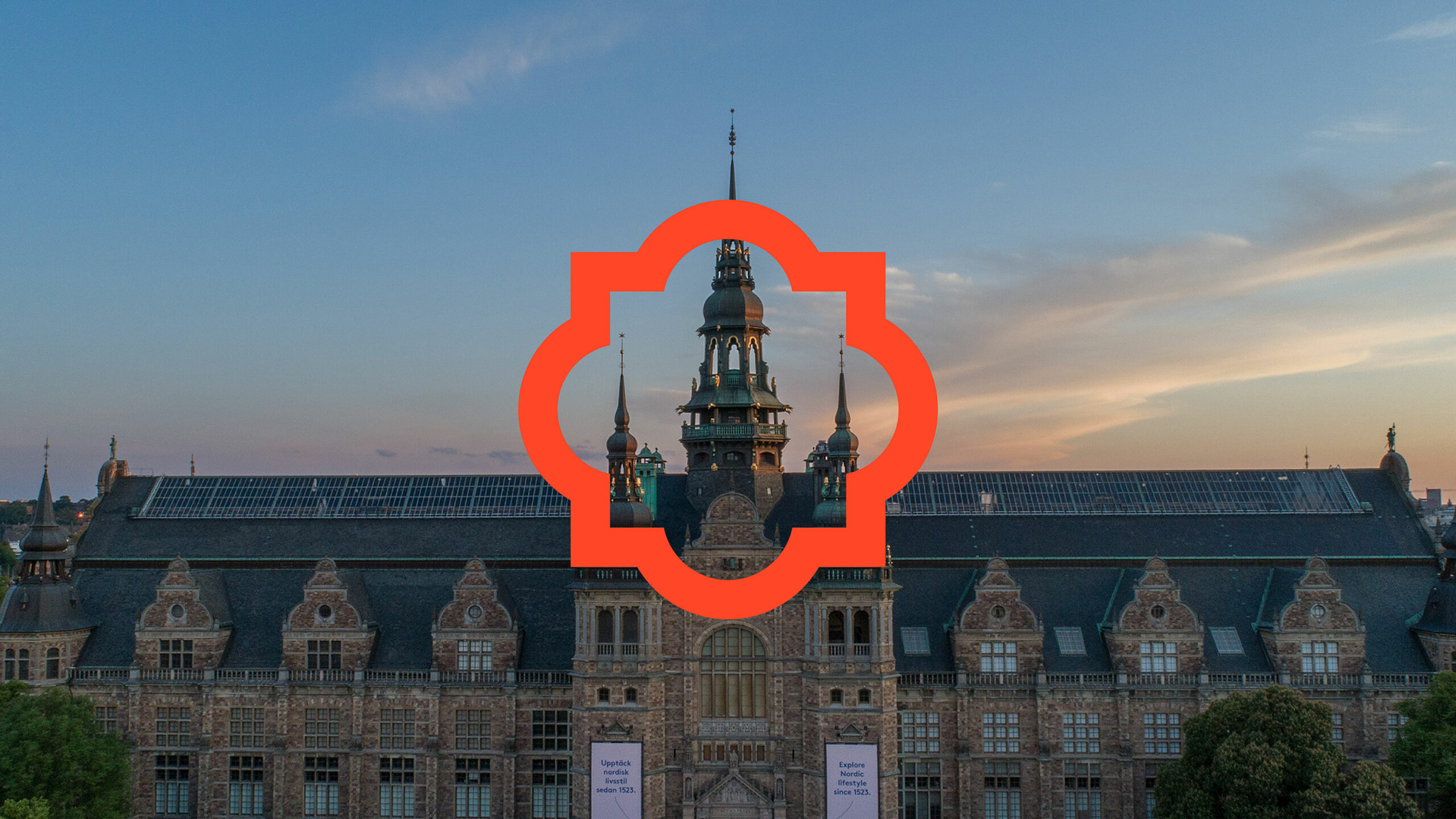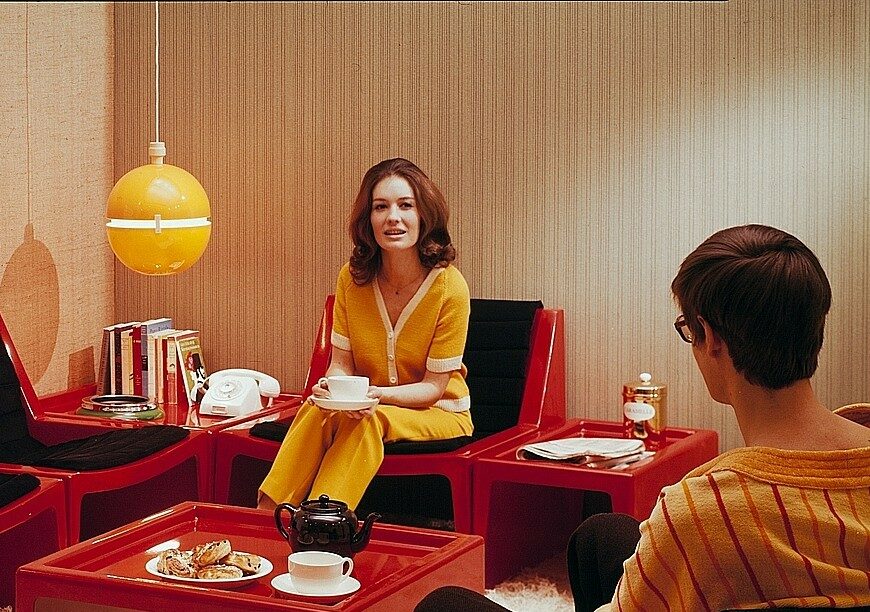On Our Future
Our future is uncertain. Humans are now living at the expense of future generations. Meanwhile, we have never been in a better position to solve our problems together, and create a better world. But how to make such a world without imagining it first?

Our Future web site is not available in English, but via this link (Google translate) you can have it translated to the language of your choice.
What difference does 150 years make? If we could transfer a person from 1873 – the year the Nordic Museum was founded – to 2023, they would likely marvel at many things.
Not just the technological advances, such as smartphones and space travel, or nuclear power and the internet. They would also notice the change in how people live and work. All adults have the right to vote. Gender roles are less clearly defined. Same-sex marriage has been introduced. In the past, Nordic people emigrated to other continents; now, other people immigrate here. Most of our work no longer requires physical strength nor takes place in a factory.
They would probably be horrified by many things: the devastation of the two World Wars, the melting polar ice caps and the extinction of so many animals and plants. But they would also be delighted by the medical advances. Diseases that were once fatal are now easily treated with penicillin. Organs from one human being can be placed inside another, who can live on in turn, thanks to the transplant.
A lot of things would also be the same. They would recognise many buildings. We still celebrate holidays, and eat three meals a day. The children go to school. The language spoken on the streets can still be understood, while many other languages have been added. Now as then, people harbour dreams about their lives and the prosperity of future generations.
Would it have been entirely impossible for our 19th century person to predict the future in their own time, or were there already visible clues of what was to come?
Collection
With this anniversary collection, we ponder the potential futures to come. Both those that awaited us in the past and those we are now anticipating. But these visions, too, will soon be history. For this reason, your contribution becomes a window to our present, available to the people of the future. Perhaps in 2173, the Nordic Museum will be able to present your contribution in connection with the 300th anniversary at Djurgården in Stockholm?
The Our Future collection project contains more than your own story. It provides an opportunity to share the thoughts and visions of others. The groundwork for a broader discussion about society here and now. For how can we achieve the desired future unless we first define what we want for ourselves?
In-depth analysis
In addition, there are a number of small digital exhibitions for in-depth study. We have chosen to highlight stories from 1997, already a quarter of a century ago, when the Nordic Museum asked people to write down their thoughts about what was to come. The responses covered everything from unemployment to the millennium bug, as well as perpetual themes such as community and nature. We interviewed four people who participated in that collection project, asking: How did things turn out? The results can be found here, along with the letters from the past.
We can hardly discuss the future without mentioning the children. They make up the next generation, those who will carry the torch of humanity. In our collection project My Life, aimed at primary schools, we have spent several years asking students about their thoughts on the year 2050. We have chosen to present some of their answers in a digital exhibition available here. If you are a primary school teacher and would like your class to participate, more information can be found via this link.
However, for upper secondary school teachers, we feel that Our Future can be a rewarding springboard for teaching. Students can fill out the form themselves, and teachers can review the answers through our website. This page tells you more about ways to work with Our Future in the classroom.
In addition, the Nordic Museum has invited experts to talk about what we really know about the future. Archivist Marie Steinrud tell us more about how we used to look at the future. Curator Anna Fredholm discusses why a museum collects stories about things that have not yet come to pass. And we ask ourselves what we can actually predict, together with Professor of Philosophy Gustaf Arrhenius, CEO of the Institute for Futures Studies. Watch the clips here.
Throughout the 150th anniversary of the Nordic Museum, more in-depth analyses will feature on the Our Future website. Feel free to check back in from time to time! Because the future is always in motion.
Welcome!
Contact us:
Project manager: Jörgen Löwenfeldt.
Curator in Charge: Anna Fredholm.
Press contact: Sofia Hiller.
Would you like to receive emails a few times a year, with information about the collections of the Nordic Museum? Sign up here.
Terms and conditions
Read our terms and conditions for contributing to Nordiska museets collections.
Photos and AI support
The images used for the animation on the start page were taken by 1) an unknown photographer sometime in the mid-19th century, 2) the Nordic Museum and 3) the AI image generator Dall-e based on the instruction: “a curious 9 year old girl with brown hair of the year 2173 with her right hand to the cheek looking at the viewer, standing in the middle of the picture, background a Swedish crowd hyperrealistic.” The photo of the woman in a 1970s setting was taken by Karl-Erik Granath, and can be found here.
The same AI tool also produced the images illustrating the children’s contributions to My Life 2050. We took the opportunity to ask the AI chat tool Chat GPT what the artificial intelligence expects life in the Nordic countries to be like in 2173, and received the following answer:
“It is difficult to say exactly what life in the Nordic countries will be like in 2173, as there are many factors that can influence the development. These range from technological advances and societal changes to global events and climate change.
What is certain is that life in the Nordic countries will continue to change and develop over time. Technology may have progressed much further than we can imagine today, and societies may have changed in many ways. There may be new challenges that people have to deal with, but there may also be opportunities and improvements that make life easier and more rewarding.
It is important to remember that it is impossible to predict exactly what life will be like in 2173, and that it is important to be open to changes and opportunities that may arise.”
Production
Website produced by Earth people. Films with expert interviews produced by Drakflygaren.
Tell us your story!
What are your thoughts on our future? With this collection project, the Nordic Museum wants to focus on your desired future. What would you like Sweden and the world to be in the future? What can we do together in order to achieve it?

